
Itäsuomenkarja (ISK)
- Home
- Our work
- Farm animals
- Nordic native breeds
- Itäsuomenkarja (ISK)
English name: Eastern Finncattle (EFC)
Other names: Kyyttö, Östfinsk boskap
Weight: 519 kg (cows)
Height: 127cm (cows)
Colour: Light brown/red, color sided/lineback pattern “kyyttö” pattern, polled
Type: Dairy and beef breed
Number of offspring: 1-2
Birth weight: 26 kg (KAO)
Number of breeding females 2019: totally 1894 breeding females, of which 197 in milk recording herds, 1697 in non-milk recording herds.
Not at Risk – Vulnerable – Endangered – Critically Endangered – Extinct
History
Livestock came to Finland about 3,000 to 4,000 years ago. Early animal husbandry was based on grazing in summer and tolerating winter scarcity – it bred the native breed under harsh conditions. Local breeds prevailed imported breeds until the middle of the 20th centuries, as foreign breeds did not adapt well enough to local conditions. The ancestors of the Finncattle were multipurpose animals: initially, the cows were needed for producing the manure, thereafter draft power, skin, meat, and milk. The Eastern Finncattle (EFC), as the name implies, is traced to the eastern part of Finland. It is the oldest Finncattle breed: the breed association was established in 1898 at a cattle exhibition in Kuopio. The pedigree registration began afterwards in 1914. In the early days of breeding, the emphasis was on appearance, like coat colour patterning, but eventually, the breeding focus shifted to milk production for several decades.
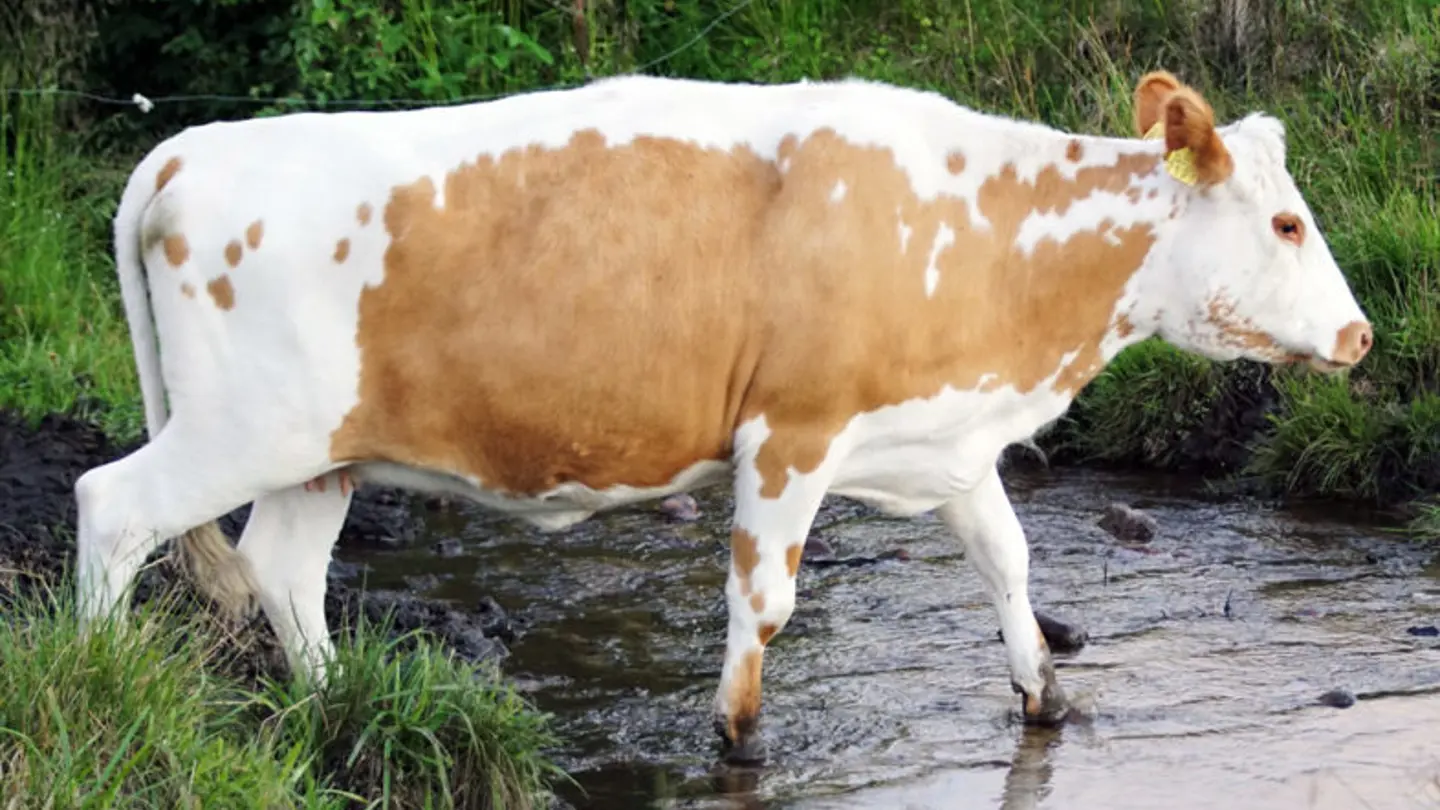
The near history from WWII till today
World War II left dramatic traces on Eastern Finncattle when parts of Eastern Finland (Karelia) became part of the Soviet Union. Evacuated people from the lost areas brought their cows with them. A lot of cows had to be left behind, many died during a difficult journey. The breed lost both its geographical area and a significant part of its population. Due to the decline, the herd book was merged with other Finncattle breeds to one breeding association entitled Finncattle Breeding Association in 1946. The merge was done in such a way that three cattle types remained distinct and today are still considered separate breeds. The big renewals in agriculture blended with the losses of WWII and dated back to the 1970s and 1980s when the breed became threatened with extinction.
Ayrshire cattle spread to the eastern and northern parts of the country in the 1950s and replaced the local breeds. Moreover, the import of Friesian cattle semen for artificial insemination in the 1960s accelerated the decrease of the number of purebred Eastern Finncattle. In the 1980s, only fifty cows were left in isolated herds and less than ten bulls remained from the Eastern Finncattle. Luckily, there were also semen doses of seven old EFC AI-bulls left at one bull station in Finland that helped to revive the breed.
The first steps in conserving animal genetic resources were taken in Scandinavia in the 1960s. Professor Kalle Maijala was one of the first defenders of native breeds adapted to local conditions. He spoked about the disappearance of genes and local populations.Among other things, Maijala based his views on genetic markers, and speculated about the link between unique alleles, such as blood groups and production traits long before the molecular genetics of animal breeding.
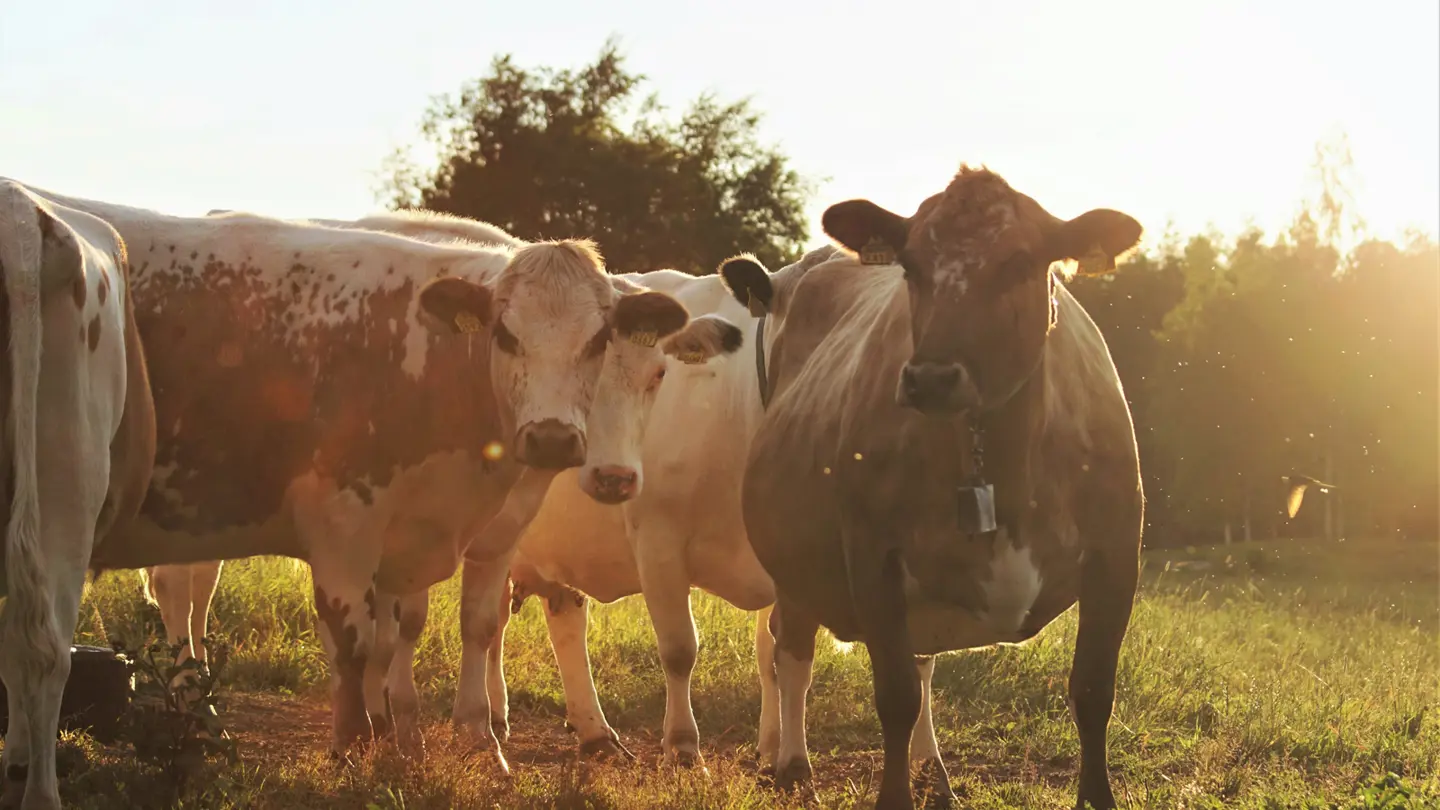
One of the most essential achievements of work initiated by Kalle Maijala was forming in situ herds in a state-owned prisons and school farms. A contract with five schools was signed in 1975 and the work for establishing prison gene bank was started in 1981. Cooperation with prison farms and vocational agricultural colleges has been a special feature in the conservation of Finnish native cattle breeds.
Living gene bank for Eastern Finncattle was established on the Sukeva prison farm. When the Sukeva Prison abandoned farming and dairy production in 2008, the Kainuu Vocational College (KAO) received official gene bank status for Eastern Finncattle. The current revival of the breed has scattered the breed all over the country. A significant era of conserving farm animal genetic resources will end soon when the last prison gene bank will be closed in 2022. Lappia Vocational College, Loue (Tervola) has been chosen as the new home for the Northern Finncattle gene bank herd.
Management of the breed
Today, only small proportion of the Eastern Finncattle is engaged in the milking recording system. The scarcity of animals used for dairy production has raised concern about the breed's traditional role as a dairy breed and have turned the focus of the activities back on conservation and monitoring inbreeding. The population has increased recently due to augmentation animals kept outside of dairy production in ecosystem services such as landscaping by the suckler cow production system. When Finland joined to EU, farms keeping rare native animals began to receive subsidy.
The Natural Resources Center (LUKE) coordinates and implements Finland’s National Genetic Resources Programme for Agriculture, Forestry and Fishery in cooperation with the stakeholders. LUKE is responsible for tailoring the plan for conservation activities. The main aim is to secure the genetic diversity, the secondary is improving economical important traits, such as improving production capacity in milk production. The breeding organization, FABA coop, is responsible for managing practical measures, such as freezing semen dozes and elaborating breeding schemes for cows in private farms, and bulls for renewal. Inbreeding is controlled by using the EVA program (Berg et al. 2006). Cryoconservation is essential part supporting in situ measures for all native breeds in Finland – in vitro production of embryos is utilized in conservation of Eastern Finncattle. The most recent preservation activities include in vitro production of oocytes harvested from the culled animals. According to the DAD-IS database there are 7750 semen samples stored in the cryopreservation program in addition to 128 embryo samples.
Eastern Finncattle meat is marketed as a specialty product. A few top restaurants offer dishes made from the milk or meat of the breed. Thence, a lot of private farms are focusing on the use of breed for landscape management and beef production. Moreover, many of the farms keeping Eastern Finncattle are multifunctional e.g. maintaining cultural values, processing their own products to obtain added values, focusing on direct sales or exercising organic production (Gandini et al. 2010). A popular channel for sales takes places through Reko-rings (fair consumption, facilitated through a Facebook group).
Characterization
All Finncattle breeds are closely related and belong to northern Fennoscandian polled breeds, which form a distinct group together with Swedish Mountain cattle, Icelandic cattle, Norwegian Doela cattle and Norwegian Telemark cattle. Eastern Finncattle has a distinct phenotype: typically reddish-brown cow has a broad, white line on its back, and a white face and stomach. The pattern, known as “kyyttö” in Finnish, is describing the specific colour type and the breed, is also known as “color sided” in other breeds, like the Norwegian Colour sided Troender and Nordland Cattle.
The breed has been relatively small in body size. Like other Finncattle breeds, individuals of the Eastern Finncattle breed are naturally polled. The milk production is the lowest among the Finncattle breeds, but with the help of branding, milk and meat from Eastern Finncattle have become valued brand products. For example, laboratory analysis of the meat characteristics implies tender meat with favourable intramuscular fatty acid composition (Suleimenova 2016). Further, the milk is also suitable for cheese making as it has a 10% increase in cheese yield (Tupasela et al., 2014). For instance, Eastern Finncattle milk coagulates better and forms firmer mass for cheese making than milk from commercial breeds. According to a recent study, Eastern Finncattle has an interesting oligosaccharide profile suitable branding and commercial products.
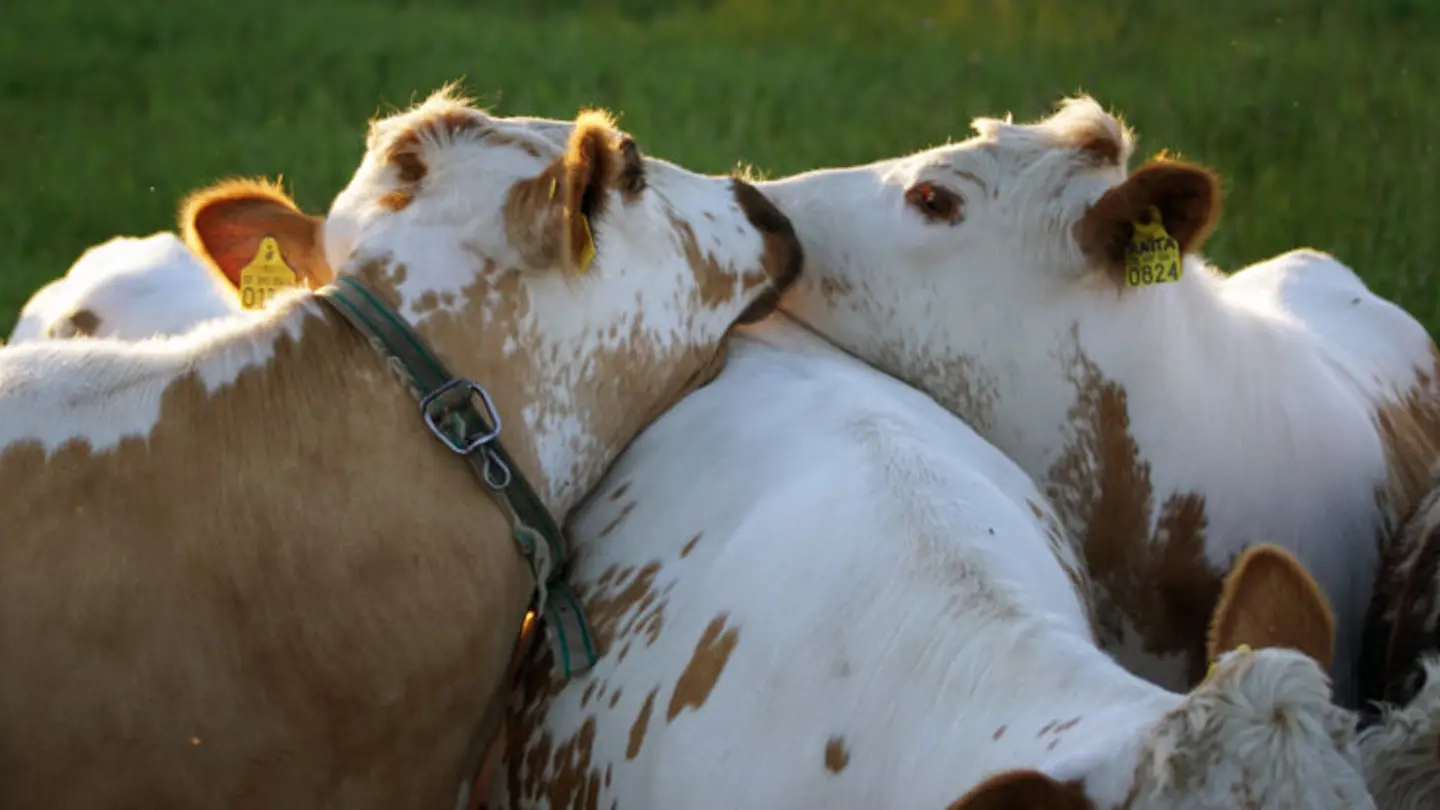
Molecular genetics studies have shown Eastern Finncattle displaying relatively high within breed genetic variation (Kantanen et al. 2000, Iso-Touru et al. 2016). The effective population size of Eastern Finnish cattle has gradually increased and is now estimated to be in the order of 40-60 (Siipola, 2019).
According to the farmers, the breeds' main strengths and possibilities are special traits such as longevity, health, and fertility, along with the added value of products (Gandini et al. 2010).
Eastern Finncattle has been studied most among the Nordic cattle breeds (Kierkegaard et al. 2020). More than 40 different studies have been published on it, emphasizing the mapping of genetic diversity with molecular genetics or genomics. In contrast, there are fewer international studies on phenotypic traits or the breed's cultural and social significance. Besides, Eastern Finncattle has the most abundant studies on the social significance of all Nordic cattle breeds, which confirms that the breed has a great symbolic value in Finland (Kierkegaard et al. 2o2o; Gandini et al. 2010).
Did you know?
On linguistic grounds, the Eastern Finnish herd have existed as breeds of at least some degree for at least 2,000 years (Niinikoski).
Production (2021)
Milk: 4450kg
Fat content: 4.29%
Protein content: 3.45%
References
Ahlman: https://ahlman.fi/ahlman/suomenkarja-ja-maatila/tutkimuksia-ja-kaytantoja/
Bennewitz J., Kantanen J., Tapio I., Li M.H., Kalm E., Vilkki J., Ammosov I., Ivanova Z., Kiselyova T., Popov R., et al. 2006. Estimation of breed contributions to present and future genetic diversity of 44 North Eurasian cattle breeds using core set diversity measures. Genetics Selection Evolution 38, 201–220.
Berg P., Nielsen J. and Sørensen M.K. 2006. EVA: Realized and predicted optimal genetic contributions. CD communication 27-09, 2pp. WCGALP, 2006, s.246.
DAD-IS (http://www.fao.org/dad-is/data/en/)
EURECA https://www.regionalcattlebreeds.eu/breeds/Eastern%20Finncattle.html
FABA https://faba.fi/en/
Gandini G., Avon L., Bohte-Wilhelmus D., Bay, E., Colinet, F.G., Choroszy Z., Díaz C., Duclos D., Fernández, J., Gengler, N., Hoving-Bolink,R., Kearney, F., Lilja, T., Mäki-Tanila, A., Martín-Collado, D., Maurice-van Eijndhoven, M., Musella, M., Pizzi, F., Soini, K., Toro, M., Turri, F., Viinala, H., the EURECA Consortium and S.J. Hiemstra. 2010. Motives and values in farming local cattle breeds in Europe: a survey on 15 breeds. Animal Genetic Resources, 47, 45-58, 2010.
Huuskonen A. 2014. A comparison of Nordic Red, Holstein-Friesian and Finnish native cattle bulls for beef production and carcass traits. Agricultural and Food Science 23, 159–164.
Härkönen H. 2018. Monisikiötiineydet lypsyroduilla Suomessa. MSc thesis. https://www.theseus.fi/handle/10024/148523
Hämeen Ammattikorkeakoulu Maatiaiskarja. https://sites.google.com/site/maatiaiskarjahamk/pks-historia
Iso-Touru T., Tapio M., Vilkki, J, Kiseleva, T., Ammosov, I., Ivanova, Z., Popov, R., Ozerov, M., Kantanen, Juha. 2016. Genetic diversity and genomic signatures of selection among cattle breeds from Siberia, eastern and northern Europe. Animal Genetics 47 6: 647-657.
Kantanen, J., Olsaker, I., Adalsteinsson, S., Sandberg, K., Eythorsdottir, E., Pirhonen, K., and Holm, L.-E. 1999. Temporal changes in genetic variation of North European cattle breeds. Animal Genetics 30, 16–27.
Kantanen, J., Olsaker, I., Brusgaard, K., Eythorsdottir, E., Holm, L.-E., Lien, S., Danell, B., and Adalsteinsson, S.2000a. Frequencies of genes for coat colour and horns in Nordic cattle breeds. Genetics Selection Evolution 32, 561–576.
Kantanen, J., Olsaker, I., Holm, L.-E., Lien, S., Vilkki, J., Brusgaard, K., Eythorsdottir, E., Danell, B., and Adalsteinsson, S. 2000b. Genetic Diversity and Population Structure of 20 North European Cattle Breeds. The Journal of Heredity 91, 446–457.
Kantanen, J., Edwards, C.J., Bradley, D.G., Viinalass, H., Thessler, S., Ivanova, Z., Kiselyova, T., Ćinkulov, M., Popov, R., Stojanović, S., et al. 2009. Maternal and paternal genealogy of Eurasian taurine cattle (Bos taurus). Heredity 103, 404–415.
Kantanen, Juha. 2009. Värillä on väliä. Nauta 1: 32-34.
Karja M. 2012. Suomenkarjan ja suomenlampaan suojelun ohjauskeinot. MSc thesis. http://urn.fi/URN:NBN:fi:hulib-201507211944
Kinnunen A. 2010. Suomenkarjan käyttö terapiaeläimenä. Thesis. https://www.theseus.fi/bitstream/handle/10024/24759/Kinnunen_Anu.pdf?sequence=1
Kierkegaard, L., Groeneveld, L., Kettunen, A., and Berg P. 2020. The status and need for characterization of Nordic animal genetic resources. Acta Agriculturae Scandinavica, Section A — Animal Science. https://doi.org/10.1080/09064702.2020.1722216.
Kovanen M. 2012. ”Ihmisen kokoinen”: eläinsuhde ja sosiokulttuurinen kestävyys pientilojen asukkaiden lehmämuistoissa. MSc Thesis. https://jyx.jyu.fi/handle/123456789/40626
Li, M.-H., and Kantanen, J. 2010. Genetic structure of Eurasian cattle (Bos taurus) based on microsatellites: clarification for their breed classification. Animal Genetics 41, 150–158.
Li, M.H., Sternbauer, K., Haahr, P.T., and Kantanen, J. 2005. Genetic components in contemporary Faroe Islands Cattle as revealed by microsatellite analysis. Journal of Animal Breeding and Genetics 122, 309–317.
Li, M.H., Adamowicz, T., Switonski, M., Ammosov, I., Ivanova, Z., Kiselyova, T., Popov, R., and Kantanen, J. 2006. Analysis of population differentiation in North Eurasian cattle (Bos taurus) using single nucleotide polymorphisms in three genes associated with production traits. Animal Genetics 37, 390–392.
Li, M.-H., Tapio, I., Vilkki, J., Ivanova, Z., Kiselyova, T., Marzanov, N., ćInkulov, M., Stojanović, S., Ammosov, I., Popov, R., et al. 2007. The genetic structure of cattle populations (Bos taurus) in northern Eurasia and the neighbouring Near Eastern regions: implications for breeding strategies and conservation. Molecular Ecology 16, 3839–3853.
Li, M.-H., Iso-Touru, T., Laurén, H., Kantanen, J., and others. 2010. A microsatellite-based analysis for the detection of selection on BTA1 and BTA20 in northern Eurasian cattle (Bos taurus) populations. Genet Sel Evol 42, 32.
Lien, S., Kantanen, J., Olsaker, I., Holm, L.-E., Eythorsdottir, E., Sandberg, K., Dalsgard, B., and Adalsteinsson, S. 1999. Comparison of milk protein allele frequencies in Nordic cattle breeds. Animal Genetics 30, 85–91.
Lilja T. 2014. Alkuperäiskarjan kasvattaminen: Mielihyvää elämään, mielenkiintoa työhön. MTT Kasvu 19. http://www.mtt.fi/mttkasvu/pdf/mttkasvu19.pdf
LUKE https://www.luke.fi/tietoa-luonnonvaroista/geenivarat/elaingeenivarat/
Martin-Collado, D.; Diaz, C.; Mäki-Tanila, Asko; Colinet, F.; Duclos, D.; Hiemstra, S. J.; EURECA Consortium; Candini, G. 2013. The use of SWOT analysis to explore and prioritize conservation and development strategies for local cattle breeds. Cambridge University Press 2013. doi:doi:10.1017/S175173111200242X.
Ministry of Agriculture and Forestry of Finland: National genetic resource program for agriculture, forestry and fisheries in Finland. 2020.
Maijala, Kalle. 1970. Need and methods of gene conservation in animal breeding. Ann. Genet. Sel. Anim 2 (4), 403-415.
Maijala, K 2011. Early animal genetic resources conservation in Scandinavia – first decades of identification and conservation of animal genetic resources in Scandinavia. Animal Genetic resources. Vol 49.
Read more about our other native breeds
-
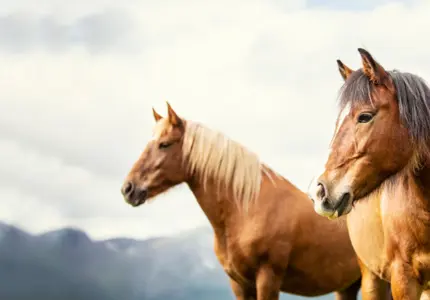
Nordland/Lyngen Horse
The first known and documented exhibition where this breed participated, was in 1898 at Lyngseidet in Troms. In the 1930s, organized breeding of Nordland/Lyngen horses started.
Read more about the breed
-
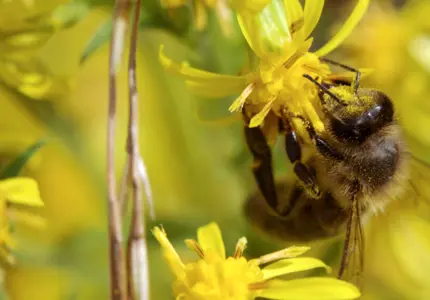
The Nordic brown bee
Honey bees are threatened by intensive agriculture, habitat loss and climate changes worldwide and are important to conserve, not only due to their honey production but also due to their pollination services.
Read more about the breed
-
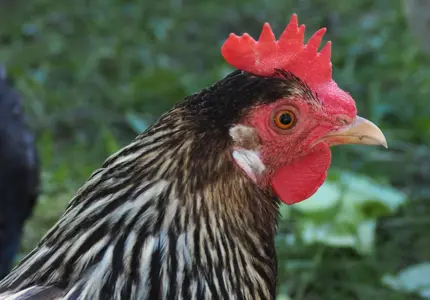
Finnish Landrace Chicken
In 1974, the agricultural advisory agency collaborated with Seiskari and published a call to find remains of the Finnish landrace chicken. As a result, one flock was found in South-East Finland. This family line was named after its geographical location as “Savitaipaleenkanta”.
Read more about the breed